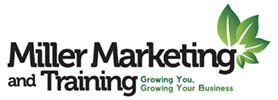Success Is In The System
Revolution happens in your company when you stop working in your business and start working on it. I learned this profitable lesson in The E Myth Revisited: Why Most Small Businesses Don’t Work and What to Do About It by Michael Gerber. Anyone considering starting a company should read this book.
You work on you business by developing systems and processes that enable your staff to provide consistent results, with or without your participation as an employee.
Gerber reports 85% to 90% of independent small businesses fail, while an equal amount of franchise businesses succeed. When you purchase a franchise business, you buy someone else’s proprietary systems and processes, which have been tested and proven to deliver consistent results in the marketplace. Franchises usually establish a process for everything imaginable – from taking out the trash and ordering office supplies to marketing systems that run on autopilot. These processes are documented so their effectiveness can be tracked and improved.
Systems are more important in the selling process. Consistent results are the lifeblood of effective sales organizations and are exactly what selling systems can deliver. To develop your selling system, you may want to use Harvard Business Review’s Critical Success Factors (CSF). Every process or organization utilizes CSFs. If one is missing, failure is possible. The seven CSFs in the selling process include prospecting, getting appointments, building rapport or trust, identifying prospects’ needs or problems, presenting solutions, closing sales and personal development.
Pooling Prospects
Prospecting could also be considered your sales department’s marketing function or system. An effective marketing system reaches into a pool of prospective customers and warms them up, freeing you and your salespeople form having to make cold calls.
Before you choose methods to bring in clients, you must identify your best prospects or market segmentation.
Not all interiorscape prospects are equal, so you should invest your time and energy in those who will give the best return.
In addition to determining your prospects, you must consider how you will track them. A busy salesperson should have 50 or more prospects in various stages of the sales process. Without a system to follow up on each one at an appointed time, you’re wasting selling hours.
Call For An Appointment
When you follow up on a prospect over the telephone, do you sell plants? No. unless you close a deal with your prospect’s credit card number, you are only selling an appointment.
The system for selling an appointment is a predetermined sales script, which many successful salespeople and companies use. They combine voice inflection, tone and powerful questioning. Questions must be compelling so prospects agree to meet you at specific times.
Developing Relationships
Building rapport and trust with a prospect generally begins with the first phone call but, more importantly, occurs at the appointment. A system for building trust includes a checklist for an essential product – you. A tough prospect for a large development company once said to me, “This looks good, you present yourself well.” She bought the salesperson before she bought the plants.
Your system’s checklist for building rapport should include this question: “Do I look and act like a professional salesperson?” It should also include questions about personal grooming, attitude and friendliness.
Trust Is Everything
How do you trust a new accountant, financial advisor or medical doctor? It starts and grows with questions these professionals ask. Salespeople also establish trust by using a selling system made up of questions. Again, this part is best conceived with a script.
Salespeople who fail to use scripts argue that they are too confining and ruin individuality and freedom. However, the opposite is true. When you are confident with a scripted sales presentation, you have freedom because you can always return to what is known and predictable.
For example, imagine a questioning process that begins like this: “Mr. Bailey, would you share one challenge you’re facing with your interiorscape program? If there were an ideal solution, what would it be? What do you see as the consequences if you left this problem alone? What primary aspect of our interiorscape program is important to you?” The heart of the sales process, a questions system, gets results.
The Service Solution
Once you’ve identified a prospect’s unique problem or need, you should present your service as the solution. Developing a system for solutions focuses on writing proposals. You can streamline the proposal-writing process by using a preprinted form with a fill-in-the-blank format. It’s a real time saver and deal closer on occasions when you can close sales on the first call. However, most sales are tow-call processes.
After you’ve gathered information (the problem), you prepare a typed proposal (the solution), and then make an appointment to revisit the prospect.
If you’ve typed your proposals using a word processing program, you’ve probably found many short cuts, templates and time savers to zoom through this task.
For example, instead of repeatedly typing long plant names in Microsoft Word, I’ve used the autocorrect feature found under the tools menu. It assigns a three-letter code to each plant. After typing DMC, my computer converts it to Dracaena Massangeana Cane.
We’ve adopted this three-letter code system throughout our company. In fact, we prefer the shortened letter code. It’s just another small brick placed in the foundation of the system we’re building.
Gaining Agreement
Creating a system around the closing step begins with knowing your best closing techniques. Hopefully, you have established a method for bringing sales to a point of agreement to proceed. Most salespeople skip this step and settle for the perfunctory response, “I’d like to think it over.”
Your system for closing sales should be honed from years of experimenting. Don’t be afraid to try something new with your next prospect, especially if it’s obvious you won’t make the sale.
Sales trainer Brian Tracy says, “When you’ve got nothing to lose, experiment with everything.” Act like you’re a scientist working to find the right combination of chemicals for a breakthrough drug, except you’re experimenting with words instead of chemicals. Learning something from each call will help you on the next. If you sell nothing, at least you’ve learned how to improve the system.
Working On You
The final CSF to consider is your personal development. The most important product a salesperson sells is himself.
What is your system for improving the value of a product? Considering you are physical, mental and spiritual, your personal development system must include all of these elements.
Since we’re talking about systems, your approach should be specific, measurable and intentional. The bigger a person you become through systematic personal development, the more difficult you are to say no to – which is invaluable for a salesperson.
Dun & Bradstreet, a well-known business-rating company, recently published a report on why businesses, the company found: “Businesses fail because of low sales, and businesses succeed because of high sales – everything else is commentary.”
Now, it’s time for you to go to work and begin to create a selling system that never fails.





